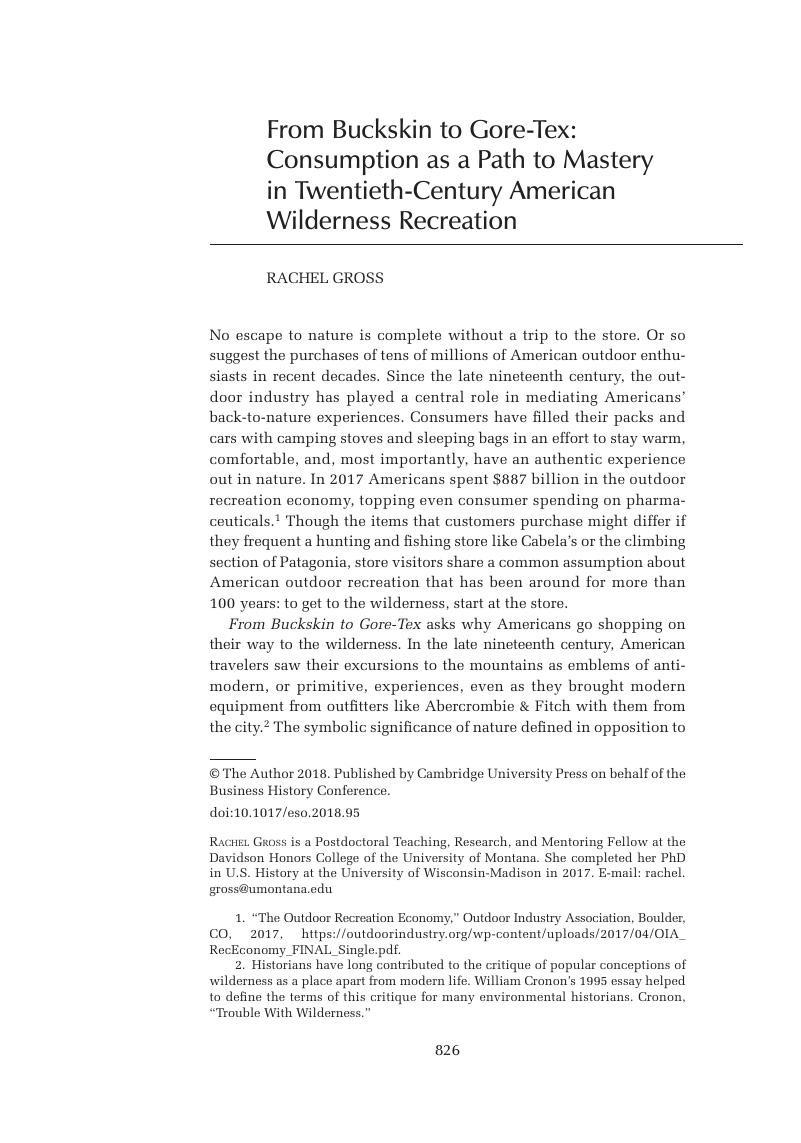Crossref Citations
This article has been cited by the following publications. This list is generated based on data provided by Crossref.
Nagle, Danielle S.
and
Vidon, Elizabeth S.
2021.
Purchasing protection: outdoor companies and the authentication of technology use in nature-based tourism.
Journal of Sustainable Tourism,
Vol. 29,
Issue. 8,
p.
1253.
Rice, William L.
2022.
The conspicuous consumption of wilderness, or leisure lost in the wilderness.
World Leisure Journal,
Vol. 64,
Issue. 4,
p.
451.



